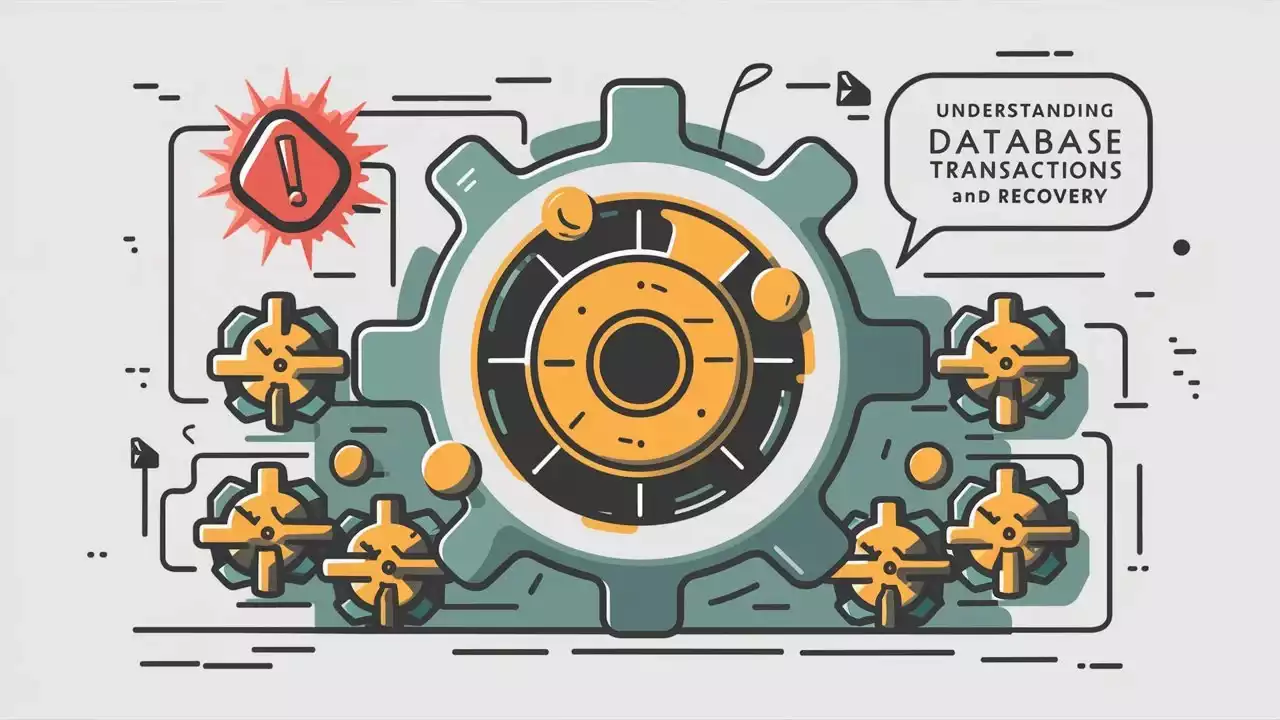The Basics of Transaction Management
Understanding Database Transactions and Recovery is crucial for maintaining the integrity and consistency of a database system. A transaction is a sequence of operations performed as a single logical unit of work, with the primary goal of ensuring that the database remains in a consistent state before and after the transaction. This involves two key properties:
- Atomicity: This property ensures that all operations within a transaction are completed successfully. If any operation fails, the entire transaction is rolled back, thus preserving the database’s consistency.
- Durability: Once a transaction is committed, this property guarantees that its changes are permanent, even in the event of a system failure. The system ensures that the effects of committed transactions are not lost and are reliably saved.
Understanding Database Transactions and Recovery not only involves these fundamental properties but also includes mechanisms for recovering from system failures and ensuring that transactions are processed in a way that maintains the database’s integrity. This comprehensive approach helps in achieving robust and reliable transaction management.
Handling Failures: The Role of Transaction Logs
When a failure occurs during a transaction, the database needs a mechanism to recover and restore a consistent state. This is where the transaction log comes into play. The transaction log is a non-volatile storage, typically a disk, where every transaction is recorded before it is applied to the database. This process involves two steps:
- Logging the Transaction: Before making any updates to the database, the transaction details are written to a separate log file. This log is an append-only binary file, meaning data is added sequentially to the end of the file. This approach minimizes the need for time-consuming seek operations, making the logging process swift and efficient.
- Executing the Update: After logging the transaction, the actual update is made to the database.
Write-Ahead Logging (WAL) Protocol
A common method for ensuring data integrity during transactions is the Write-Ahead Logging (WAL) protocol. In WAL, all changes are written to the log before they are applied to the database. This protocol involves marking the start and end of transactions with <BEGIN> and <COMMIT> records, respectively. The log contains identifiers for the transactions, objects being modified, and both before and after values of these objects, facilitating both undo and redo operations (DbVisualizer) (Kevin Sookocheff).
Reboot and Recovery
If the database crashes before the transaction is completed, upon reboot, the system uses the transaction log to reprocess and complete any pending transactions. This ensures that the database is restored to a consistent state, either by completing the transaction (if it was logged but not applied) or by rolling back any partial changes
The Complexity of Distributed Databases
In a distributed database environment, where data is spread across multiple servers, managing transactions becomes more complex. This is due to the need for coordination among different servers to ensure data consistency. The Two-Phase Commit Protocol (2PC) is a widely used method to handle this coordination:
- Prepare Phase: A coordinating server sends a prepare message to all participating servers, asking them to prepare for the transaction. Each participant then writes the transaction details to its log and replies with an acknowledgment if it is ready to commit.
- Commit Phase: Once the coordinator receives acknowledgments from all participants, it sends a commit message, instructing all participants to finalize the transaction. If any participant is unable to commit, the coordinator sends a rollback message to abort the transaction (DbVisualizer).
Advanced Recovery Mechanisms: The ARIES Algorithm
The ARIES (Algorithm for Recovery and Isolation Exploiting Semantics) crash recovery algorithm is another sophisticated method used in some database systems. It utilizes a series of steps to ensure data recovery, including analysis, redo, and undo phases. During the analysis phase, the system identifies which transactions need to be redone or undone. In the redo phase, it re-applies all committed transactions from the log. Finally, the undo phase reverses the effects of uncommitted transactions to ensure the database is consistent (Kevin Sookocheff).
Conclusion: Understanding Database Transactions and Recovery
Understanding and managing database transactions is crucial for ensuring data integrity and consistency, especially in the face of failures. By utilizing transaction logs, protocols like the Two-Phase Commit, and advanced recovery algorithms such as ARIES, databases can effectively recover from crashes and maintain a consistent state. This knowledge is fundamental for backend engineers tasked with building reliable and robust database systems.

















